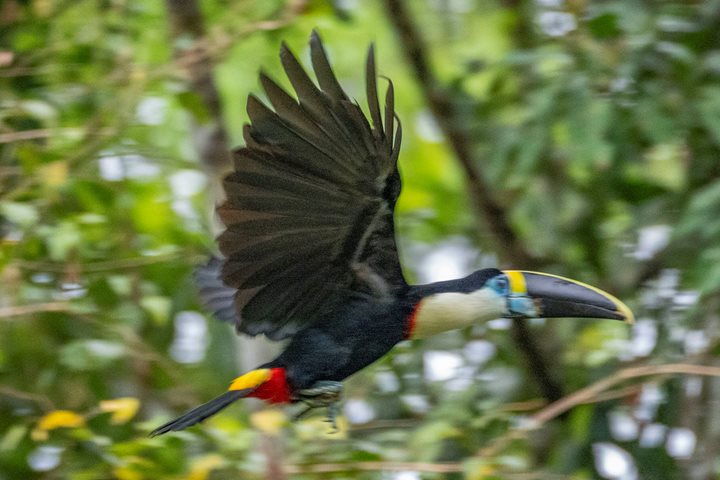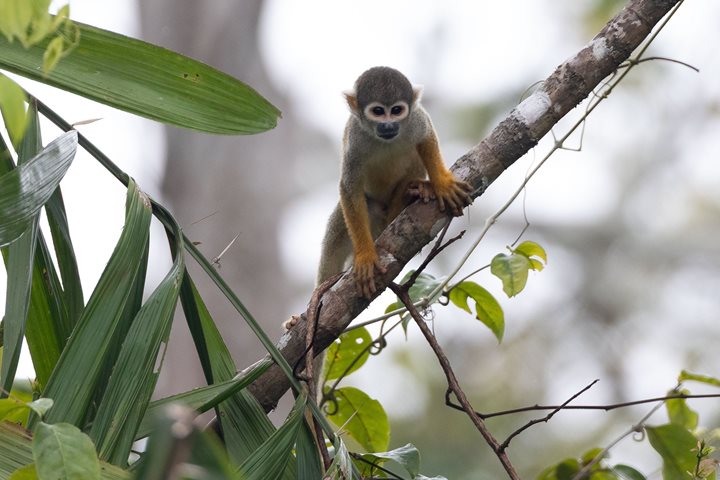Today we started our day with our traditional early morning skiff ride along Paguachiro Creek, and it was a great chance to observe birds which we haven't seen so far on this expedition. This is one of the best times of the day to observe birds, so we took advantage of the abundance of wildlife in this region. One of the highlights of this outing was a capped heron, which we were lucky to see up close. The horned heron is a wonderful-looking bird with a striking blue face, a black cap and a long feather coming off the top of its black cap. We saw this bird flying and landing, showing off its gorgeous colors.
After this ride, we came back to the Delfin II for breakfast and quickly got ready to visit Casual trail. This is a community-managed trail, where local guides help us to spot various native species of frogs, snakes, birds, plants and insects. My favorite sighting was a juvenile anaconda, which we found resting on a shallow river bank. Anacondas can reach up to 10 meters, or 30 feet long, and the one that we found was about 6 feet long. Female anacondas give birth to living baby snakes, not eggs. Mother anacondas can give birth to up to 50 young anacondas, which are born with about 30 inches long. Our guide explained that this particular individual was molting, shedding its old skin. After Casual trail, we had our first presentation of a series of three workshops which we do as part of our onboard pPhotography program. While we were almost finishing the presentation, the captain interrupted us to let us know that there was a tamandua, better known as anteater, just outside by the stern of the ship, so everyone agreed that we will continue later on. This surprise was really worth it!
This spectacular southern tamandua stayed in the same tree more than 30 minutes, giving us a wonderful time to witness and photograph its astonishing feeding behavior. They have powerful, curved front claws that are so large that they cannot walk on the soles of their forefeet, so Tamanduas basically walk on the outside of their hands. We saw how skillful this animal can be when using its long tube-like snout and large tongue, which extends to reach inaccessible crevices. This is a very specialized animal whose tongue is covered with sticky saliva to trap insects. I was particularly impressed by its strong prehensile tail, which in some way makes this animal look like a gigantic rat, but much more beautiful and elegant!
With all this excitement we went for lunch and after a well-deserved rest, moved into our next stop: Piraña Creek. This was a great site to finish our day, with a spectacular sunset joined by the sound of thousands of parakeets and yellow-capped blackbirds. Parakeets fly rapidly in small flocks through the canopy of the forest, and at 6:00pm they make their way back to a flooded island that hosts a population of thousands of white-necked parakeets. We saw how they have to share the limited area of the small islet with big groups of yellow-capped blackbirds and caciques. I cannot imagine a better way of ending an unforgettable day full of memorable experiences, birds singing, magical sunset colors and the calm waters of the Marañon river.







